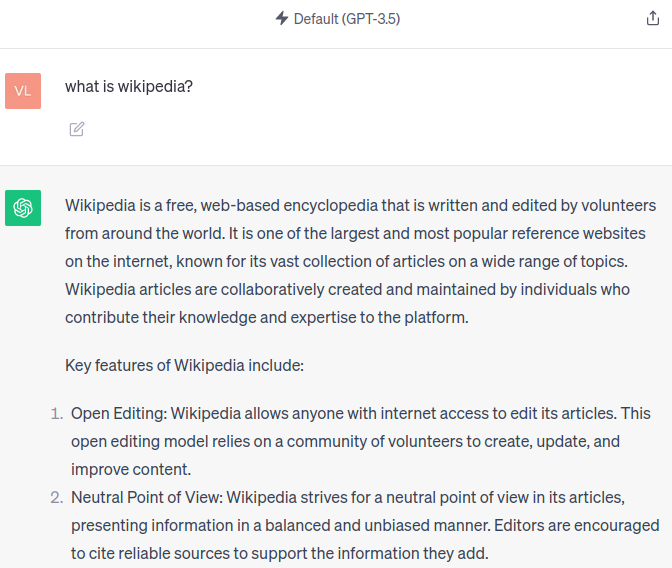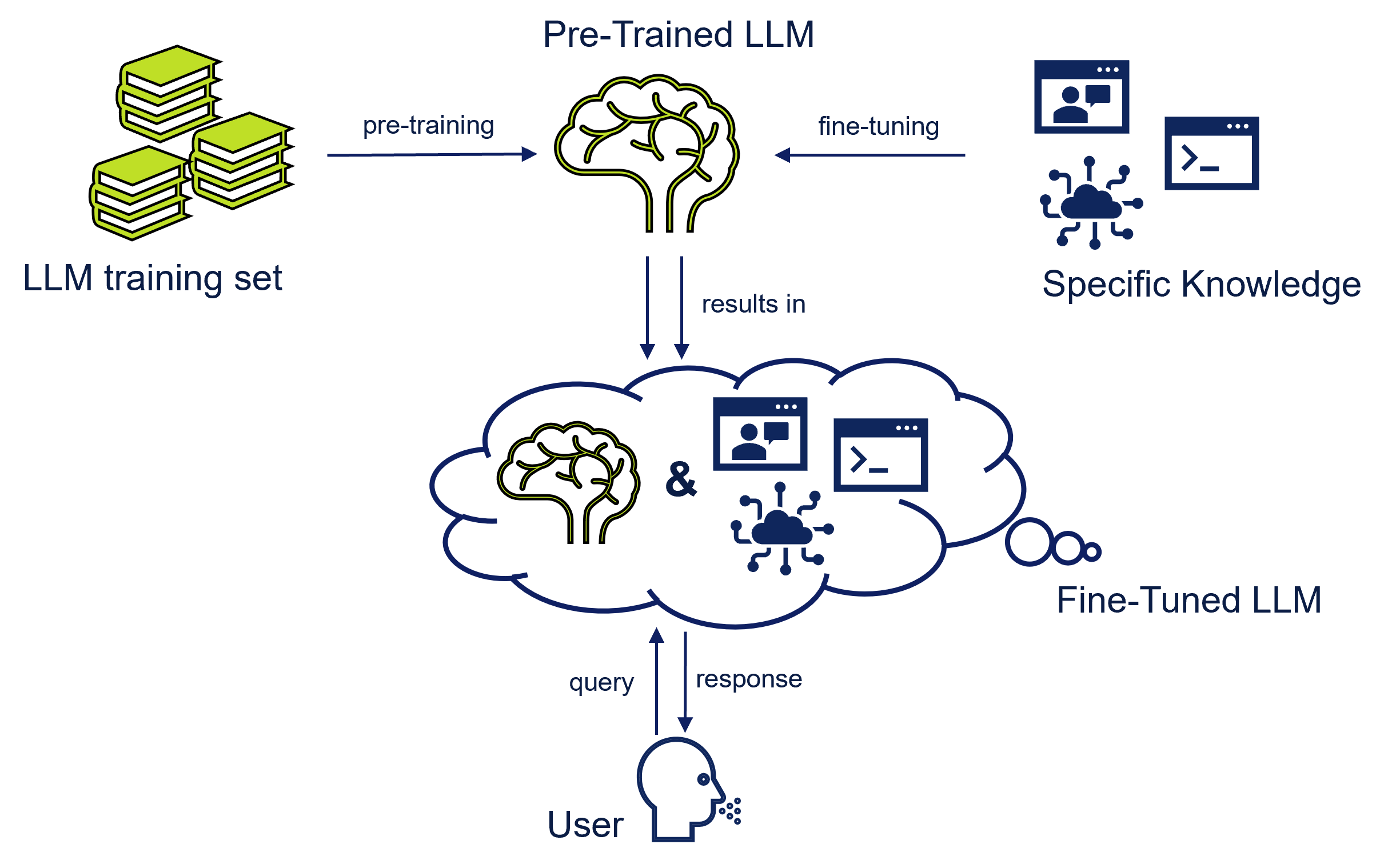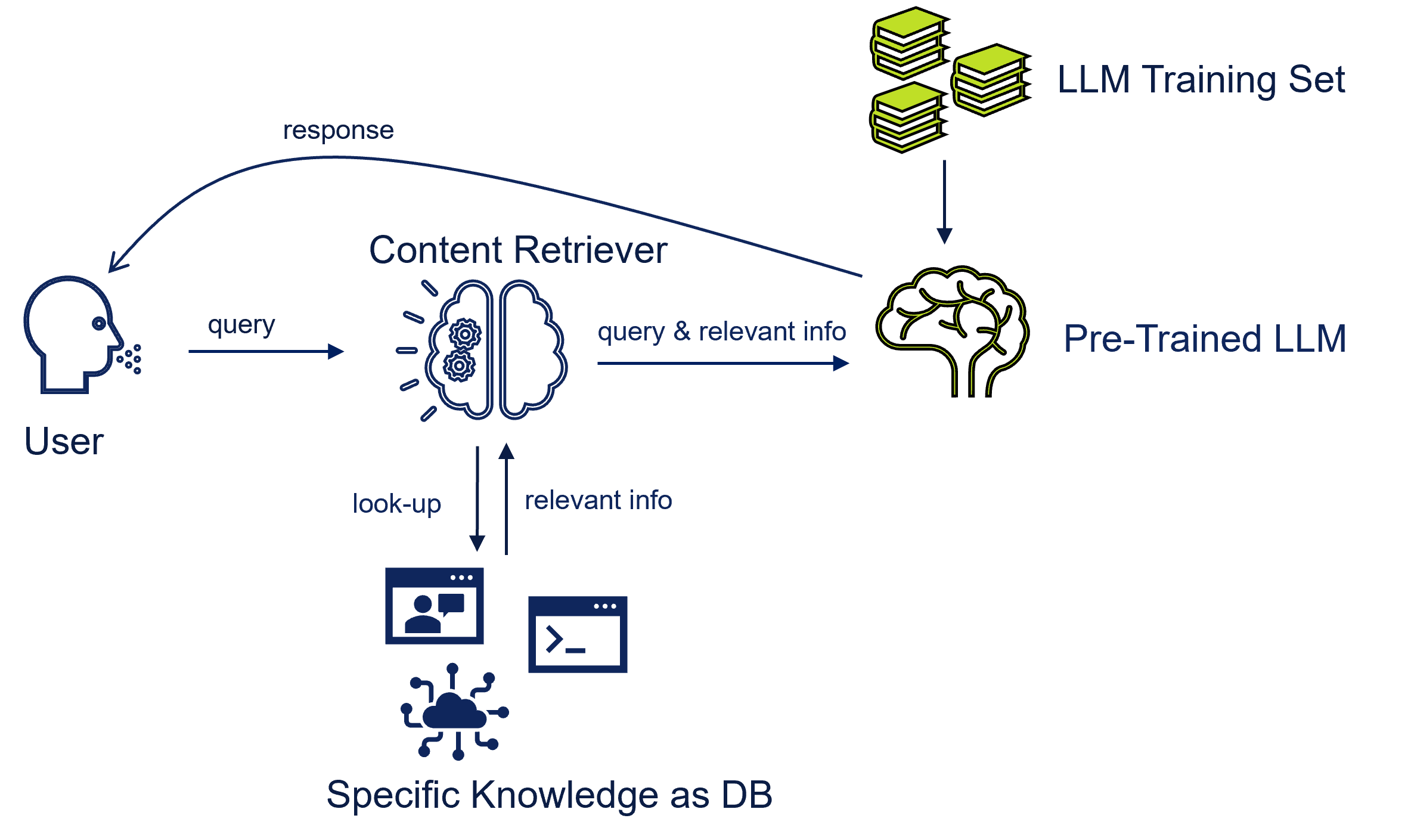Technology behind AI-powered chatbots
This post provides a quick dive into the world of Generative AI assistants, more commonly known as chatbots.
AI chatbots assist users in performing various tasks and operations, providing a natural and engaging way to interact with digital content. You've probably heard of OpenAI ChatGPT or Google Bard, and perhaps even use them on a regular basis. These chatbots process text input (that is, a prompt) and generate human-like responses. And by doing so, they use some special (next word) prediction algorithms.

AI chatbots are powered by Large Language Models (LLMs). These models are trained on a massive number of data (training datasets) that encompass books, articles, internet-based resources, and other text inputs.
However, as a rule, a Large Language Model does not know anything about you, your website, or your company. It lacks specific knowledge and possesses only general knowledge acquired during its training. To teach the LLM specific knowledge, you can use one of the following ways:
- Train a new LLM from scratch
- Fine-tune an existing LLM
- Use the Retrieval Augmented Generation (RAG) framework
Once you are done, you can build your chatbot and start asking it questions related to specific knowledge (e.g., to your website).
Training a new LLM
You can train a new LLM from scratch and use it to power your chatbot. In this case, the LLM training sets must include both general and specific knowledge.

However, training your own LLM is a big job and costs a lot of money and time. It's typically feasible for only big companies like Microsoft, Google, Meta, or OpenAI. OK, OpenAI is not so big, but it has already raised over $11 billion in funding from global investors, mostly from Microsoft.
Fine-tuning an existing LLM
Using your own LLM is not the only way to power AI chatbots. Another approach is to fine-tune an already pre-trained LLM with specific knowledge. This method allows the LLM to answer questions related, for example, to your company or your website while retaining its general knowledge.

Fine-tuning is a more efficient and practical way of powering your chatbot compared to training from scratch. It makes use of the foundation LLM that already exists and adapts it to your needs. However, fine-tuned models need regular updates to stay current with changing information about your company or your website. And this can also be laborious and costly.
Using the RAG framework
The Retrieval Augmented Generation (RAG) framework presented by Meta a few years ago is currently a prevalent method for creating AI-powered chatbots. When using this method, you fetch context-specific data from an external database and make it available to a pre-trained LLM that generates a response.

Let's take the following example. It demonstrates what happens when you send to a RAG-driven chatbot a question about your company:
- You enter a question into the chatbot and press Enter.
- A special component - smart retriever - catches your question and searches the company's database for relevant data.
- Once the smart retriever finds the relevant information, it sends it together with your question to the LLM. It also instructs the LLM to use only the provided data to answer your question.
- The LLM processes your answer and sends the reply back to the chatbot.
See it in action
We've integrated a RAG-driven chatbot into this website. You can use it to find the information you need. The chatbot can answer only questions related to the website's content. Interested in giving it a try? Simply open it up by clicking on the chatbot widget at the right bottom corner and enter a question to get started.